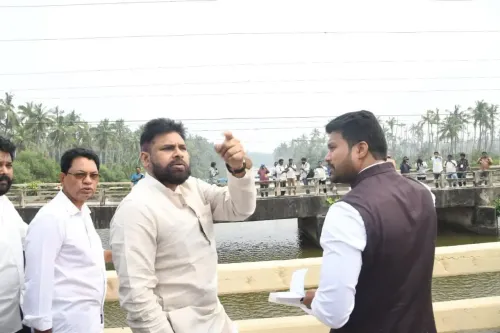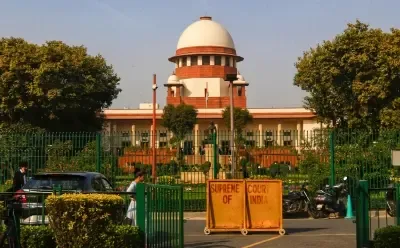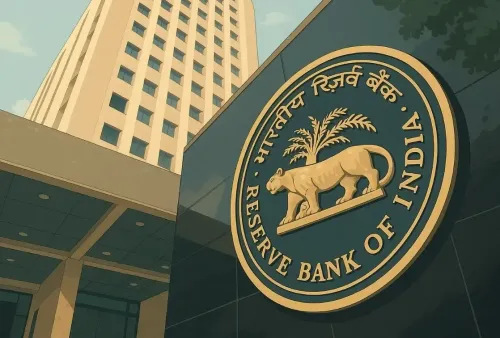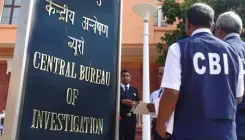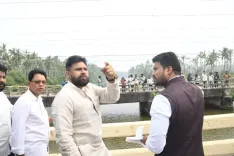Himachal: Why Were the Floodgates of Bhakra Dam Opened?
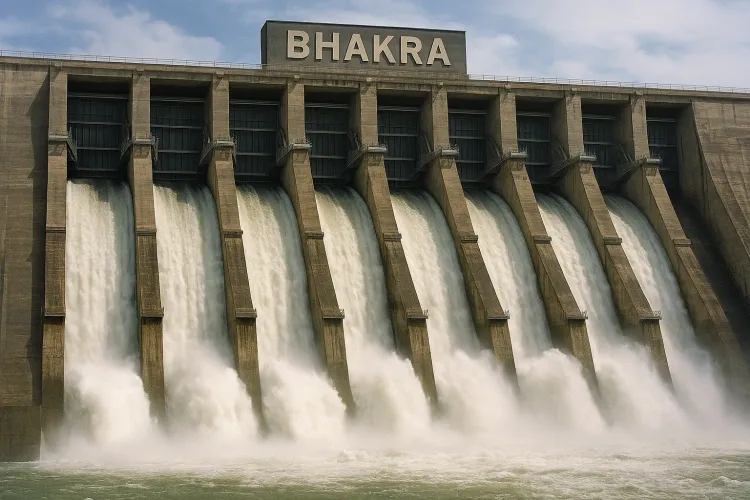
Synopsis
Key Takeaways
- The Bhakra dam's floodgates were opened due to significant rainfall.
- Villages along the Satluj and Beas rivers are at risk of flooding.
- Both Bhakra and Pong dams are under constant monitoring.
- Current water levels exceed those from the previous year.
- Officials are taking proactive measures to manage water release.
Chandigarh, Aug 19 (NationPress) Following the Pong dam, the floodgates of the Bhakra dam were opened for the initial time this season on Tuesday due to significant rainfall in the catchment areas that has dangerously raised the water levels in the reservoir, as reported by a senior official from the Bhakra Beas Management Board (BBMB), which oversees both dams.
A number of villages in Punjab and Himachal Pradesh, situated along the swollen Satluj and Beas rivers, are at risk of flooding with the release of water from the Bhakra dam, prompted by the increased inflow into the reservoirs due to relentless rain, especially in the hilly regions.
“In the coming days, the regulated discharge of water from the floodgates of both the Bhakra and Pong dams will persist to maintain safe water levels in the reservoirs,” a BBMB official informed the press.
He noted that the board is diligently monitoring the evolving situation.
“With the intense rainfall over the past week, the inflow in both dams has reached worrying levels. The management has opted to release surplus water through the floodgates to ensure the dams' safety,” he added.
Both dams fulfill the irrigation needs of Punjab, Haryana, and Rajasthan. Currently, the water level at the Bhakra Dam reservoir stands at 1,665 feet, which is 35 feet higher compared to the same period last year. The water inflow has surged to over 70,500 cusecs, up from 43,500 cusecs last year, according to officials.
In addition, the Pong Dam, located over the Beas river, has a current water level of 1,382 feet, which is 28 feet higher than last year's level.
The inflow is recorded at 1.29 lakh cusecs, with 18,000 cusecs being discharged to manage the water levels.
Moreover, the Ranjit Sagar Dam, constructed over the Ravi river, has a water level of 1,712 feet, an increase from last year's 1,707 feet. The inflow into this reservoir is 41,300 cusecs, considerably higher than last year's 12,300 cusecs.
Meanwhile, state Water Resources Minister Barinder Kumar Goyal chaired a virtual meeting to assess the ongoing flood situation across the affected districts.
The meeting involved Deputy Commissioners from Hoshiarpur, Tarn Taran, Kapurthala, Ferozepur, and Fazilka districts along with all Executive Engineers (XENs) and Superintending Engineers (SEs) of the Drainage Department.
Goyal instructed to maintain rigorous vigilance along all river embankments continuously. He stated that persistent rainfall in the upper catchment areas of neighboring Himachal Pradesh has led to elevated water levels throughout the state's river systems, necessitating increased alert measures.

